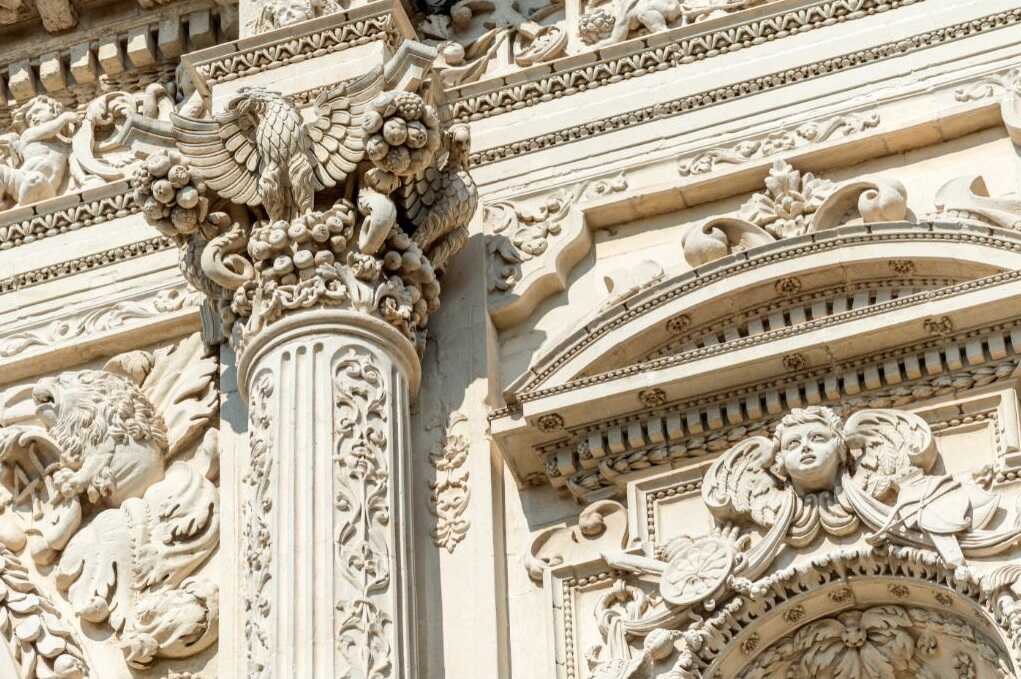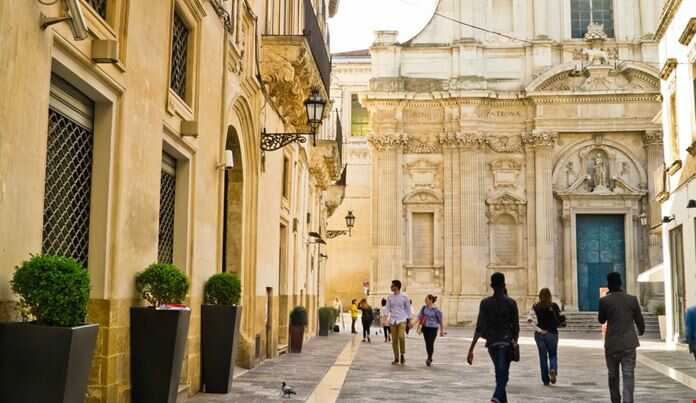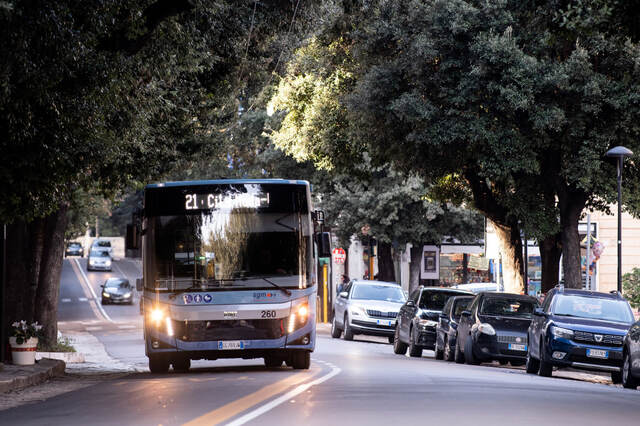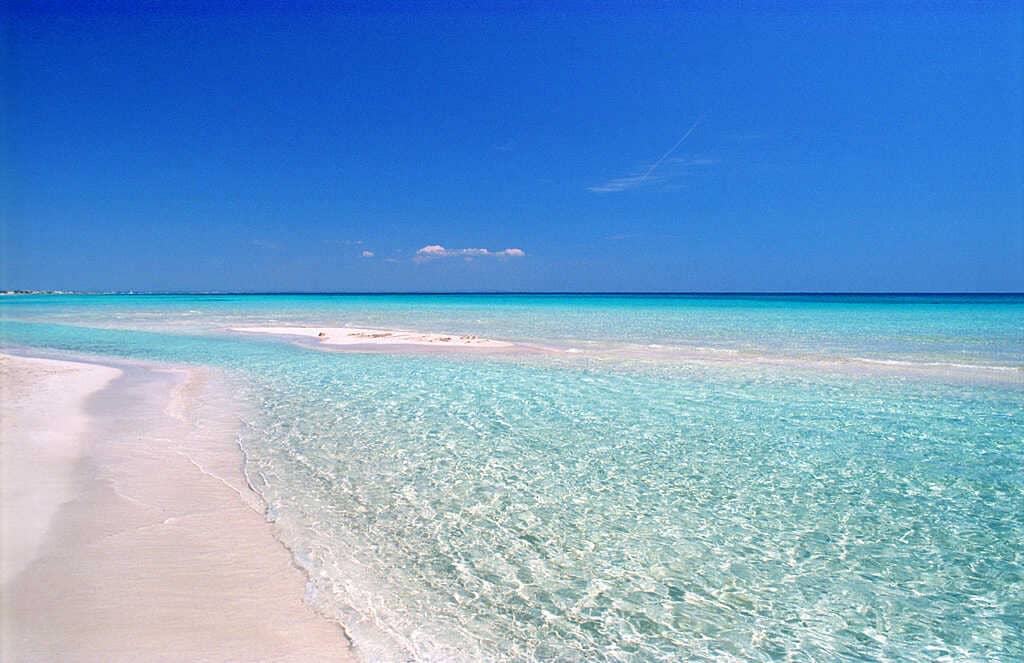Must see in Lecce
Lecce, a charming corner of Puglia, is a city that enchants visitors with its thousand-year history, lively traditions and its unmistakable architectural style: the Lecce Baroque. Often called the “Florence of the South”, Lecce is a true open-air museum that deserves to be discovered in all its nuances. If you are planning an itinerary in Lecce, here is a list of the 10 places and monuments that you absolutely must not miss.
1. Piazza del Duomo: a jewel in the beating heart of Lecce
Piazza del Duomo is the beating heart of Lecce, a place that will leave you breathless. Surrounded by imposing baroque buildings, the square is dominated by the majestic Duomo di Lecce. Do not miss a visit inside the cathedral and climb the bell tower to enjoy a spectacular view of the city. In the evening, the lighting makes this place even more suggestive. During the Christmas holidays, the courtyard of the Piazza hosts the nativity scene with a series of light installations that are reflected on the facade of the Duomo and the surrounding buildings.

2. Basilica of Santa Croce: a masterpiece of Lecce Baroque
Another masterpiece of Lecce Baroque is the Basilica of Santa Croce. The facade, decorated with a myriad of details, is a perfect example of the art that characterizes the city. Entering inside, you will find yourself in front of a serene and majestic atmosphere, ideal for a visit that will leave you speechless.

3. Roman Amphitheater: a leap into the past
If you are a history buff, you cannot miss the Roman Amphitheater. Located in Piazza Sant’Oronzo, this ancient amphitheater hosted games and shows during the Roman era and today offers a fascinating spectacle for visitors. The well-preserved ruins will allow you to imagine ancient Lecce and its traditions.

4. Piazza Sant’Oronzo
More than a simple square, Piazza Sant’Oronzo is a sort of living room of the city of Lecce, elegant and refined. In fact, some of the most significant buildings overlook the square, including the Palazzetto del Sedile (the ancient municipal seat), the Church of San Marco and the Church of Santa Maria delle Grazie, as well as the aforementioned Roman Amphitheater. In the center of the square, stands the column donated to the city by Brindisi, on top of which the statue depicting Sant’Oronzo was placed.
5. Porta Napoli: the entrance to the “old” city
Porta Napoli is one of the main entrance gates to the old city and is one of the most representative structures of Lecce. Its grandeur and neoclassical style will welcome you at the beginning of your adventure. Accompanying the “Gate”, the imposing Obelisk, erected in honor of the king of the Two Sicilies Ferdinand I of Bourbon, who had promoted the construction of the Lecce-Taranto road, projecting Lecce outside its walls.

6. Faggiano Museum
If you want to discover the city’s past in a unique way, visit the Faggiano Museum. The historic building owned by the Faggiano family, used as a museum, offers the opportunity to visit interesting historical-archaeological testimonies (tombs, cisterns, granaries, walkways, etc.), resurfaced during the restoration work, referring to different historical periods starting from the Messapians.

7. The Castle of Charles V
The Castle of Charles V is one of the main fortifications of the city, built in the 15th century. Today it hosts cultural events, exhibitions and demonstrations. In this article we talk about it in more detail.
8. The Churches of Lecce
Lecce is a city full of churches, each with its own history and beauty. In addition to the aforementioned Basilica of Santa Croce and the Cathedral, don’t miss the Church of San Matteo, an extraordinary example of Baroque, and the Church of Sant’Irene, which hides frescoes and works of art of great value inside. Every church in Lecce tells a story, and every corner holds surprises.
9. Roman Theater
In addition to the famous Roman Amphitheater (in Piazza Sant’Oronzo), we recommend you also head to the Roman Theater, also in the center. The complex is nothing less than the only example of civil architecture intended for theater in all of Puglia, discovered by pure chance in 1929. Inside, the stage is still clearly visible, 6 meters wide and more than 30 meters long, on which the performances were performed. The 5,000 spectators instead took their seats on the front steps.

10. Sigismondo Castromediano Museum
For history buffs, a visit to the Sigismondo Castromediano Museum is a must! The Museum, owned by the Province of Lecce, allows you to deepen your knowledge of Salento through the exhibition of interesting archaeological finds dating back to prehistoric times and in particular to the Messapian and Roman domination.

One-Day itinerary in Lecce
What to do in Lecce in one day? Among churches, abbeys, amphitheatres, squares and museums... it is possible to follow an itinerary that will give you a 360-degree experience of this wonderful Apulian city.

Museums of Lecce
Lecce, the capital of the province of the same name, is one of the most fascinating cities in Puglia, known for its extraordinary baroque beauty. In addition to the architectural wonders that adorn its squares and streets, Lecce hosts a vast array of museums that tell the story of the city and the region. Lecce’s […]

Lecce: to-do list
Lecce, located in the heart of Salento, is one of the most fascinating and historically rich cities in Puglia thanks to the important historical-artistic testimonies of its buildings and monuments. Not only that, Lecce also lends itself to the organization of numerous itineraries thanks to its privileged position, close to the beaches of the Salento […]

Shopping in Lecce
Lecce, the capital of the Baroque Salento, is the favorite destination for tourists visiting Salento. The city offers its visitors not only an unparalleled historical and cultural wealth, but also a shopping experience that combines style, tradition and quality. Walking through the streets of the historic center, among historic buildings and elegant squares, you can […]

How to get to Lecce
If you are planning a trip to Salento and have chosen Lecce as your “base” for your trip, you have several options for reaching this destination. Whether you arrive by train, bus, plane or car, in this article we will explore the various ways to get to Lecce, with practical details for each means of […]

What to see in the surroundings of Lecce
If you are visiting Lecce, one of the most fascinating cities in Salento, do not miss the opportunity to explore its surroundings. Porto Cesareo, Torre Lapillo, Galatina, Gallipoli and Torre dell’Orso are some of the unmissable destinations that will allow you to discover other wonders of this region, famous for its natural beauty, history and […]


